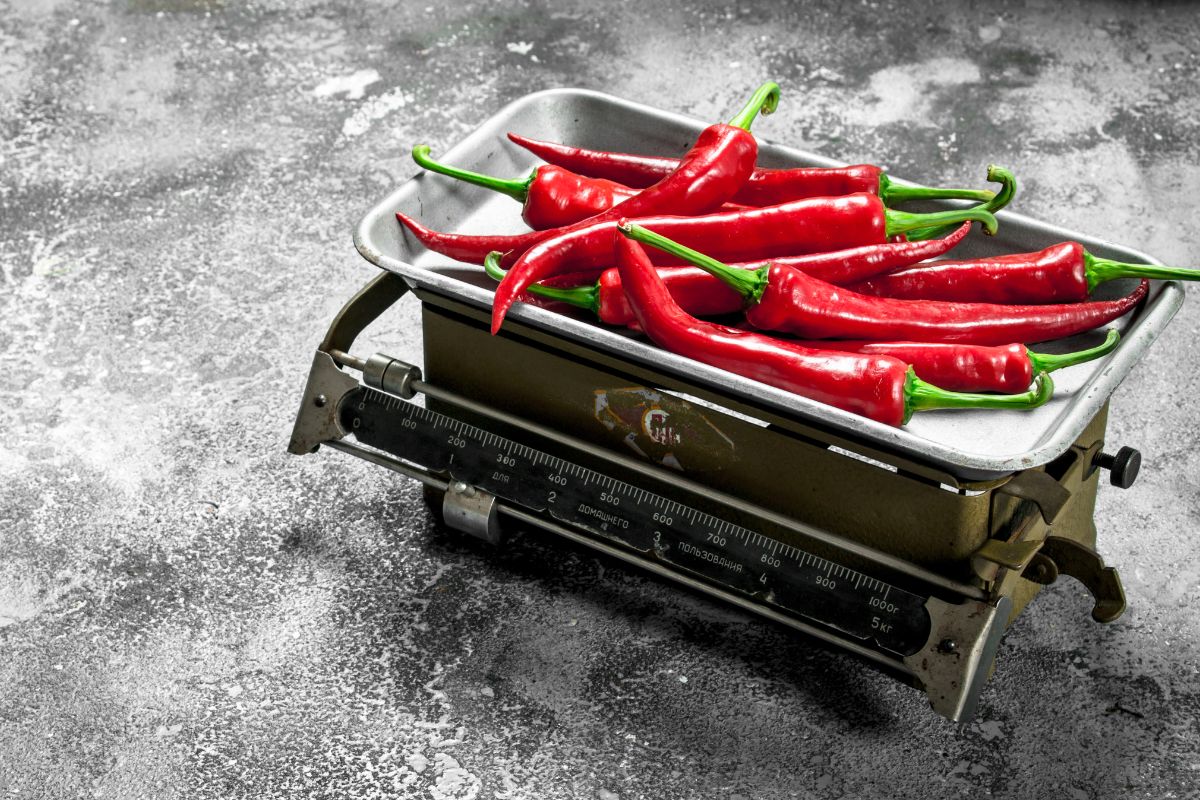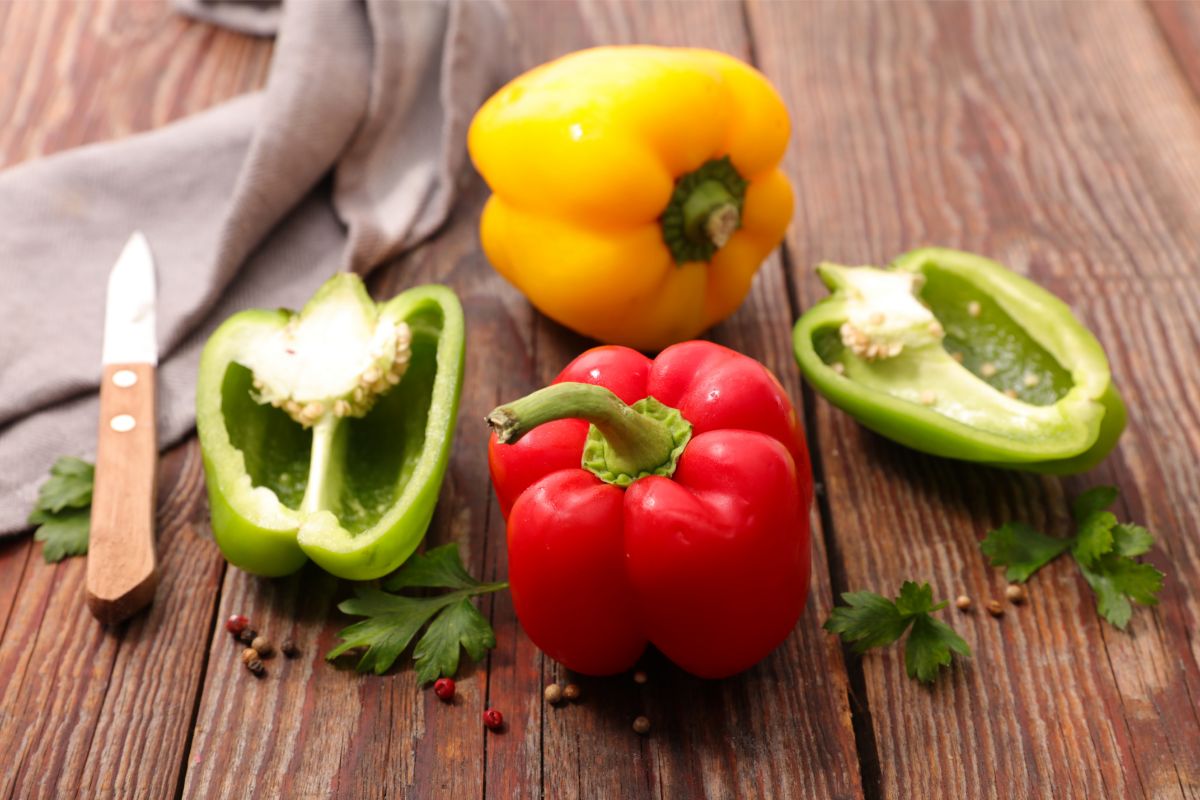You may be wondering how much is a peck of peppers if this is the quantity that you need. This is a common question as this is a vague way of measuring peppers that many people may not be aware of.
It can be quite difficult to measure produce accurately, as it varies in size so much. There are so many different things that affect how large produce is, which will directly affect how you end up measuring it when you buy it.
There are also different ways of measuring produce, such as in ounces, bushels, and pecks. So it can be difficult to know exactly how to measure peppers if you need a pack or another quantity.
Keep reading to find out how much is a peck of peppers and what can affect this way of measuring peppers.
A Peck of Peppers Is a Quarter of a Bushel
If you need a peck of peppers, you may be wondering how much is a peck of peppers. The easy way to estimate this is by acknowledging that a peck is a quarter of a bushel, so you need a quarter of a bushel of peppers to make a peck.
This is going to vary quite a lot since no pepper is going to be the exact same size as the next. Even if you get all of the same types of pepper, they are going to change in size and various degrees.
Because of this, it is impossible to say exactly how many peppers are in a peck of peppers. This is going to depend on the type of pepper, the maturity of the pepper, and how tightly you pack the peck.

Anytime you are trying to measure a quantity of produce, you are going to run into this issue because produce varies in size and weight and can be difficult to measure accurately every time.
Because of this, every time you measure a peck of peppers, you are most likely going to come up with a different results. Especially if you are measuring different kinds of peppers each time.
30 to 35
If you are trying to get a peck of peppers, it is important to understand that this usually means you will get 30 to 35 peppers. This applies to relatively small peppers that are not going to take up a great deal of space.
This will typically come to a quarter of a bushel, which is roughly considered to be a pack. This is the number of peppers that you can usually expect to get if they are relatively small and are not packed too tightly.
45 to 50
If you are trying to measure small peppers and you pack them tightly, you will usually be able to get 45 to 50 peppers. Tightly packed, this can result in a peck of peppers that gives you significantly more than if they were loosely packed.
Of course, this only applies to small peppers as you would never be able to get this amount if they were medium-sized or large. For instance, you could get 45 to 50 tightly packed chili peppers in a pack quite easily.

Other types of peppers, such as poblanos and bell peppers would not be able to be tightly packed as they are too bulky. So you would not be able to get a significantly larger peck even if you packed them very tightly.
The Type of Peppers Affect How Many Are in a Peck
When you are trying to get a peck of peppers, it is important to understand that the type of pepper is going to affect this drastically. There are hundreds of peppers to choose from, and they are going to be of various sizes.
For the most part, there are small, medium, and large peppers to choose from. These are going to impact how many peppers you can get in a peck, whether you pack them loosely or tightly.
Based on the kind of pepper that you are measuring, the above measurements may not apply. As you can only get 30 to 35 peppers in a pack if they are on the small side, not being medium or large like some peppers.
Bell Peppers
If you are talking about bell peppers when it comes to measuring a peck of peppers, the measurement is going to be drastically different. Bell peppers are very large and bulky and cannot be tightly packed, no matter how hard you try.
You would only be able to get 10 to 16 bell peppers in a pack depending on the size that you choose. Bell peppers that are smaller than the average size could give you 15 to 16 in a peck.
Chili Peppers
Average red chili peppers are one of the smallest types of pepper that you are going to find. These are very small and skinny peppers that are bright red or deep crimson in color.
If you are measuring these into a peck, you could most likely get 40 to 60 chili peppers in a pack if you pack them tightly. They are very small peppers and can lay flat against each other, allowing you to get more per peck.
Medium Sized Peppers
Medium-sized peppers are going to be widely available depending on what you are looking for. These types of peppers will be significantly larger than red chili peppers but smaller than your average-sized bell pepper.

You could typically get 20 to 35 medium-sized peppers in a peck if you pack them tightly. This also depends on the type of shape of the pepper, some peppers are round and bulky, while others are thin and flat.
The size and shape of the pepper are going to impact how many you are going to be able to get in a peck.
Peppers Can be All Kinds of Sizes
If you are trying to measure a peck of peppers, you will have to take into account all the different sizes of peppers. Not only can different kinds of peppers come in different sizes, but most peppers will also vary in size from each other.
You may have two bell peppers that are completely different sizes despite being bell peppers. So these kinds of differences will impact how many peppers you can fit into a peck.
The size of a pepper will also depend on its maturity, so younger peppers that have been picked early will usually be smaller. While larger and more mature peppers will usually be their full size or even larger.
These are things to consider if you are trying to measure an accurate peck of peppers, as this can be much more difficult than you might expect.
